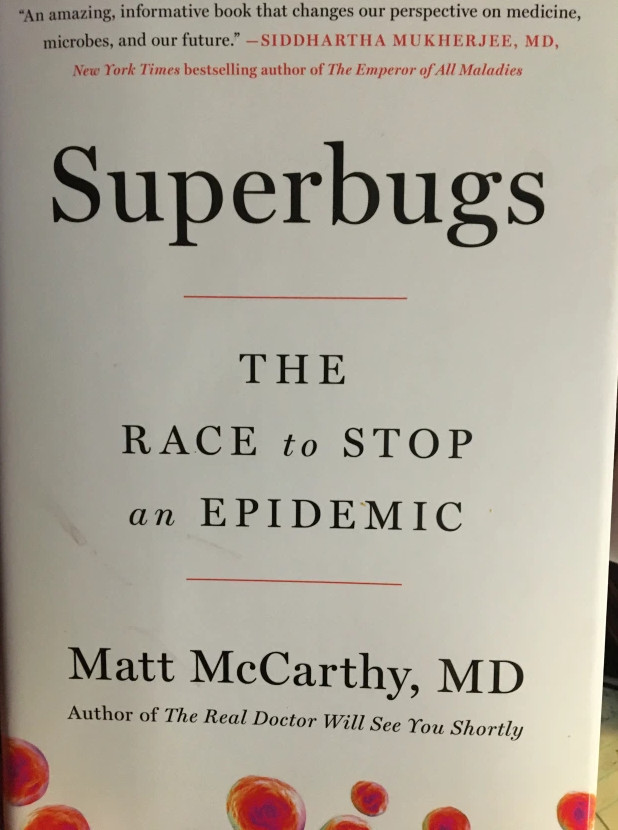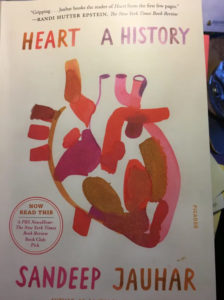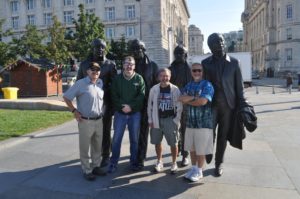Really good writers who can explain complex scientific or medical topics are rare.
Scientists and/or physicians who are really good writers are even rarer.
Ever since Columbia University physician, biologist and oncologist Siddhartha Mukherjee crafted the Pulitzer Prize-winning “The Emperor of All Maladies: A Biography of Cancer,” I’ve been on the lookout for the next breakout scientist/physician who could help us learn more about the science of our world.
Thanks to the New York State Writers Institute and the University at Albany’s RNA Institute, I recently discovered another gem. Meet Matt McCarthy, MD. He’s a staff physician (hospitalist) at New York Presbyterian Hospital and an assistant professor of medicine at Manhattan’s Weill Cornell, a leading medical and graduate school. He recently visited the Writers Institute at the University at Albany to talk about his craft and his new book: “Superbugs: The Race to Stop an Epidemic.” It’s a scary, detailed look at the battle against new antibiotic-resistant bacteria.
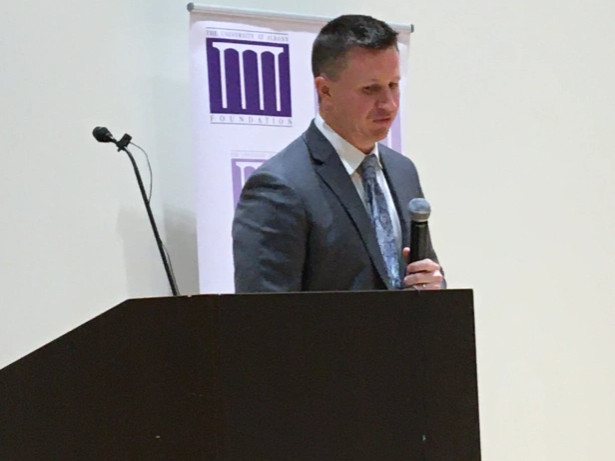
Dr. Matt McCarthy during his talk at the University at Albany
Like Mukherjee, who drew on his early days at Massachusetts General Hospital and Harvard’s Stem Cell Institute, McCarthy delves into his work with patients at Presbyterian and medical college students to apply a personal touch in telling his story about the search for new treatments. I haven’t finished his new book yet, but the afternoon and evening he spent with audiences here in Albany revealed a lot about how and why a busy doctor and medical college teacher came to devote so much time to sharing his story.
I have always been fascinated about the creative process and the spark that launches a creative endeavor. Artists like Norman Rockwell and the song-writing duo of Lennon/McCartney are two that drew my recent interest. I wasn’t disappointed with McCarthy’s story.
His decision to begin writing can be traced back to his days at Yale University and his short career as a college and minor league pitcher. Yes, he pitched in the minors and even wrote a book about it…but more on that in a bit. The lifetime musings of a famous statesman and inventor who helped found our republic kick-started McCarthy’s desire to read and then write, as he began his final year at Yale.
“The book that really changed it for me was the autobiography of Benjamin Franklin,” he explained. “Until then, I thought he was just a boring old fart. He proved to be a really provocative and interesting guy who wrote about his life in a unique way. For me, that was the first real American memoir and I’ve been fascinated with American memoirs ever since. I also started taking some survey courses (at Yale) on 19th and 20th century literature.”
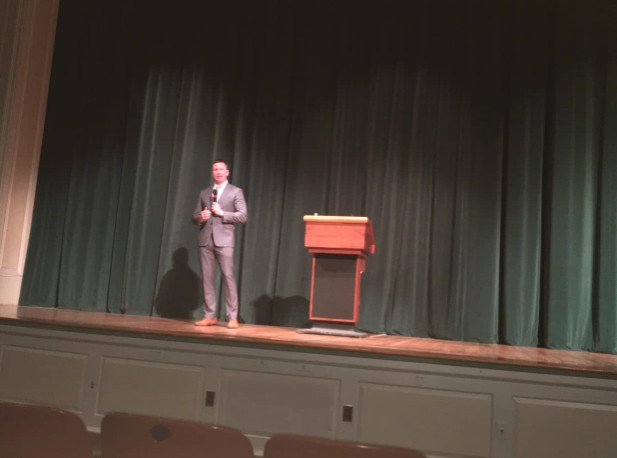
After graduating from college, the left-handed McCarthy was drafted and began his minor league pitching career at the Provo, Utah, affiliate of the Anaheim (now Los Angeles) Angels. It was there, on long bus trips through Utah, Montana, Idaho and elsewhere, that his love of reading memoirs and novels grew.
“I got that list of 100 greatest novels of the 21st century and just started reading them,” he says. “There wasn’t a lot to do, so I read a lot.” McCarthy realized during his second year in the minors that he probably wouldn’t have a successful career on the baseball diamond. He decided to return to school and started along the path to become a doctor at Harvard Medical School. But he never forgot his experience in Provo or his newfound interest in reading and, now, writing—especially memoirs. In 2009, he published his first book, a successful, revealing memoir on his baseball career: “Odd Man Out: A Year on the Mound with a Minor League Misfit.”
Memoirs continue to fascinate him. “A memoir can give you something no one else has…the writer’s story. It could be some random person, but if it’s well done it’s interesting.”
As he moved through medical school, internship and residency, McCarthy remained fascinated with reading and telling “a story” through his writing. McCarthy’s approach also continued to evolve. When he started work on his newest book, he wanted to write the history of antibiotics, but decided it had already been done. Instead, he approached the topic by telling the stories of his patients at New York Presbyterian. The result is a unique look at an epidemic through the eyes of McCarthy, an infectious disease specialist, and his patients, some of whom were facing death. e also began to adapt some of what he learned in the writing world to working with patients. Today, when he finds himself talking to a difficult, upset patient, he often steps back and employs a literary approach.
“I remove myself from the situation for a few minutes and think of the patient as a sort of character in a book,” he says. “I ask myself, ‘What is the back story here? Why are they angry?’ ” The end result, he says, is a better understanding of the patient’s reason for frustration.
McCarthy also pushes writing as a creative means for medical students and physicians to cope with long hours and difficult medical situations. “As I have found, it’s a terrific way to handle the stress we face each day.”
***
I have just started to read McCarthy’s new book. I’m looking forward to learning more about how we ended up in a situation where highly effective drugs, like the battery of antibiotics developed in the 20th century, are increasingly ineffective against bacteria that have developed resistance. McCarthy takes us into the hospital and labs where he is involved in the clinical trial of a groundbreaking new drug that might have one of the answers.
Our current situation, he explains, is partially the result of over-prescription of antibiotics—especially for illness rooted in viruses, against which antibiotics are ineffective. It’s also the result of decisions by pharmaceutical companies to avoid pursuing new antibiotics in favor of other drugs that will provide steadier income streams because patients take them every day.
“But I want to make sure readers know I adopted a very hopeful approach in writing this book,” he says. “There is hope on the horizon.”
McCarthy says one source for new classes of drugs that could fight drug-resistant bacteria is in the soil around us. The ground contains thousands of microbes that many scientists believe could help us. The problem is the time and resources needed to test them.
The next time I turn over some dirt with a shovel in my backyard I might ask myself: “Is there a microbe here that could kill MRSA?”

